Which two settings can you configure to speed up routing convergence in BGP? (Choose two.)
Refer to the exhibit.
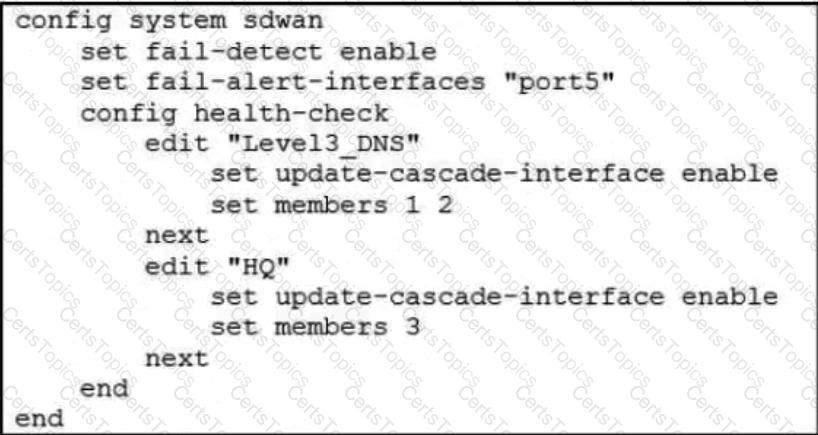
Based on the exhibit, which action does FortiGate take?
In the default SD-WAN minimum configuration, which two statements are correct when traffic matches the default implicit SD-WAN rule? (Choose two )
Refer to the exhibit.
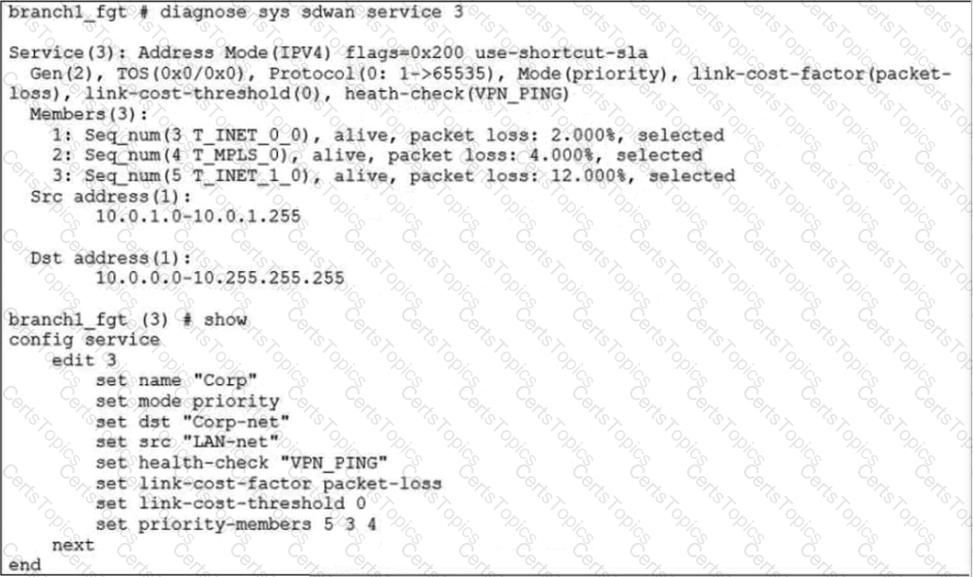
The exhibit shows the SD-WAN rule status and configuration.
Based on the exhibit, which change in the measured packet loss will make T_INET_1_0 the new preferred member?
Which best describes the SD-WAN traffic shaping mode that bases itself on a percentage of available bandwidth?
In which SD-WAN template field can you use a metadata variable?
Refer to the exhibits.
Exhibit A
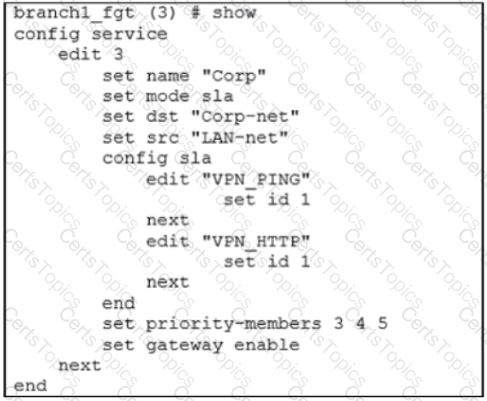
Exhibit B -
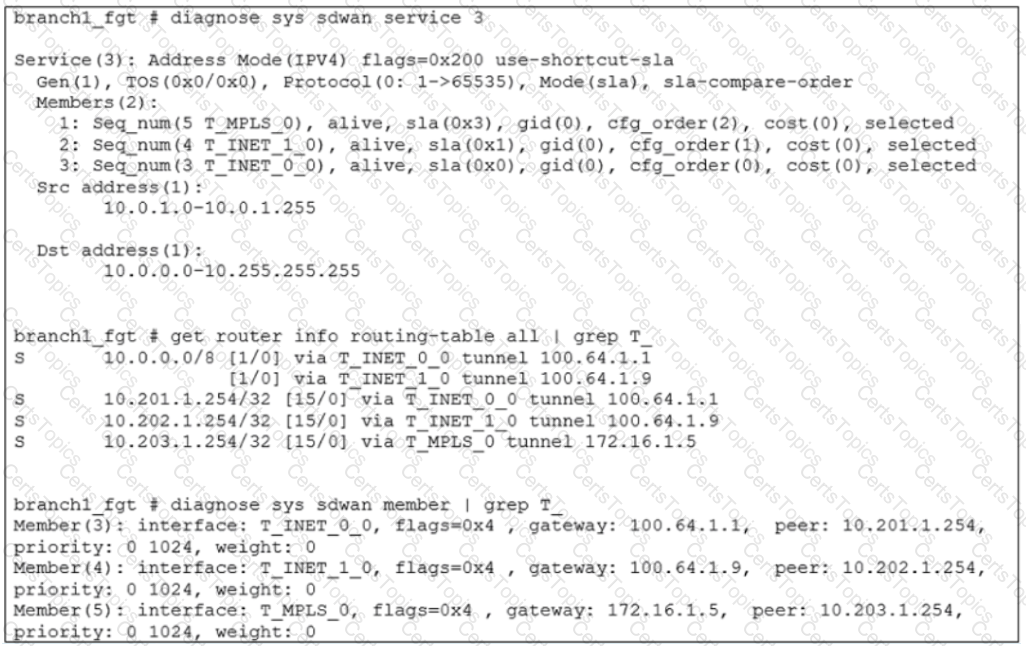
Exhibit A shows the configuration for an SD-WAN rule and exhibit B shows the respective rule status, the routing table, and the member status.
The administrator wants to understand the expected behavior for traffic matching the SD-WAN rule.
Based on the exhibits, what can the administrator expect for traffic matching the SD-WAN rule?
What are two reasons why FortiGate would be unable to complete the zero-touch provisioning process? (Choose two.)
Refer to the exhibit.
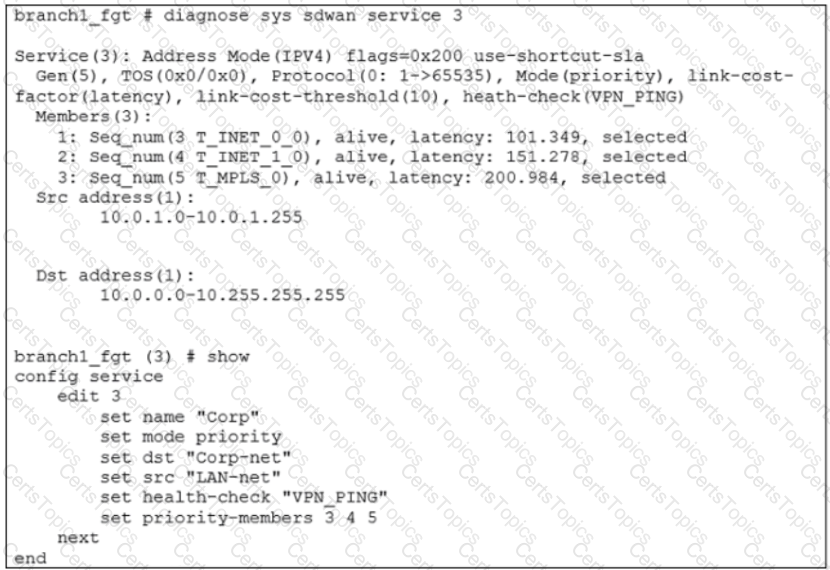
The exhibit shows the SD-WAN rule status and configuration.
Based on the exhibit, which change in the measured latency will make T_MPLS_0 the new preferred member?
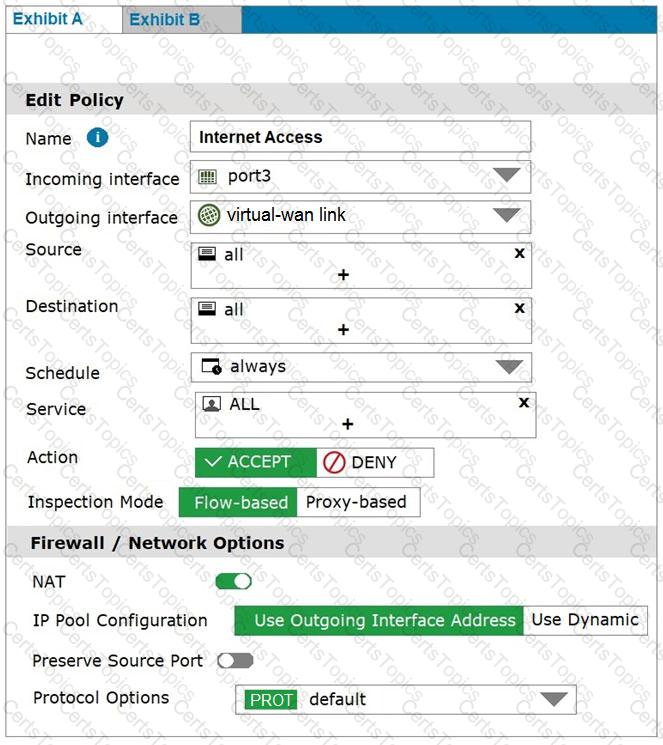
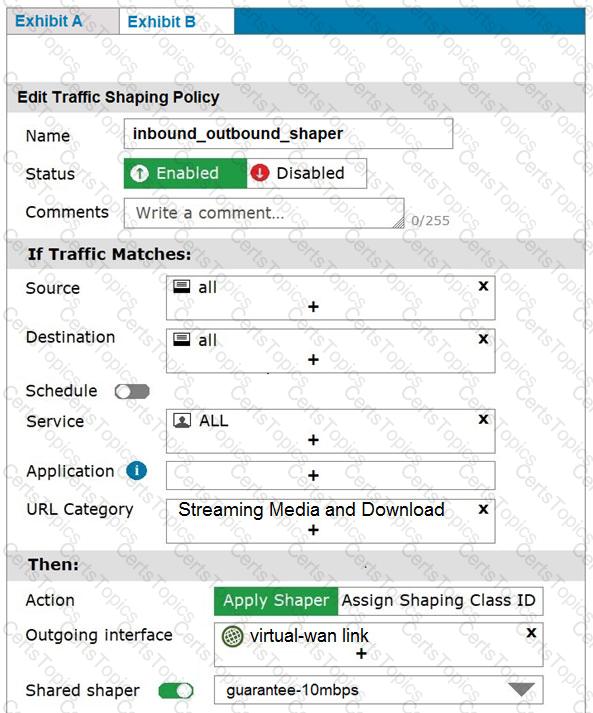
Exhibit A shows the firewall policy and exhibit B shows the traffic shaping policy.
The traffic shaping policy is being applied to all outbound traffic; however, inbound traffic is not being evaluated by the shaping policy.
Based on the exhibits, what configuration change must be made in which policy so that traffic shaping can be applied to inbound traffic?
Refer to the exhibits.
Exhibit A -
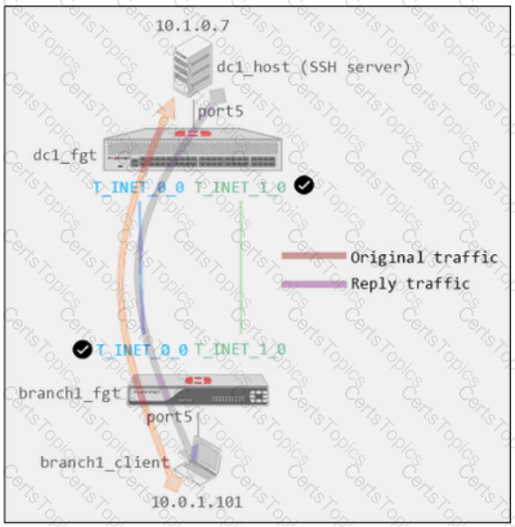
Exhibit B -
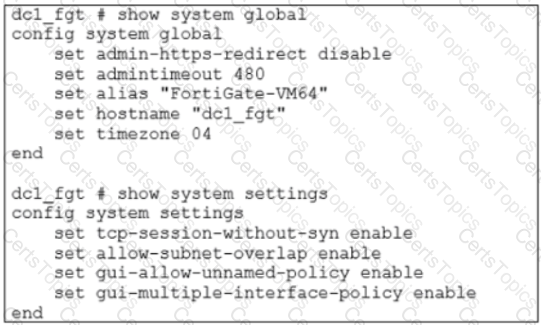
Exhibit A shows a site-to-site topology between two FortiGate devices: branch1_fgt and dc1_fgt. Exhibit B shows the system global and system settings configuration on dc1_fgt.
When branch1_client establishes a connection to dc1_host, the administrator observes that, on dc1_fgt, the reply traffic is routed over T_INET_0_0, even though T_INET_1_0 is the preferred member in the matching SD-WAN rule.
Based on the information shown in the exhibits, what configuration change must be made on dc1_fgt so dc1_fgt routes the reply traffic over T_INET_1_0?
Exhibit.
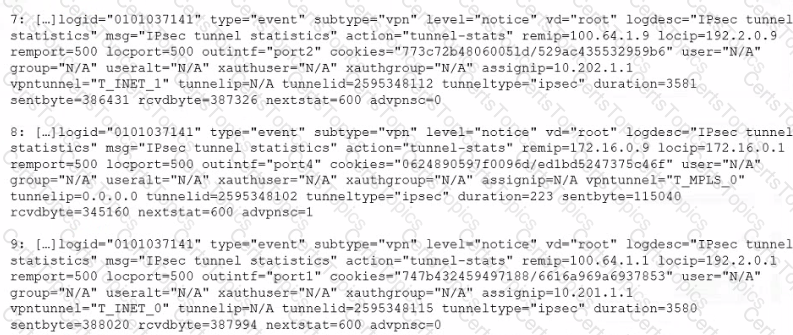
The exhibit shows VPN event logs on FortiGate. In the output shown in the exhibit, which statement is true?

Which two conclusions for traffic that matches the traffic shaper are true? (Choose two.)
Refer to the exhibit.
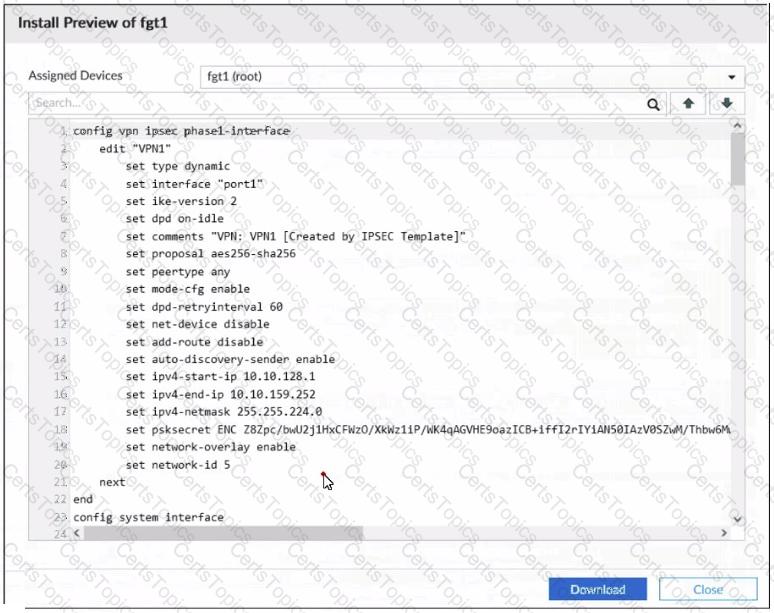
An administrator used the SD-WAN overlay template to prepare an IPsec configuration for a hub-and-spoke SD-WAN topology. The exhibit shows the installation preview for one FortiGate device. In the exhibit, which statement best describes the configuration applied to the FortiGate device?
Refer to the exhibit.
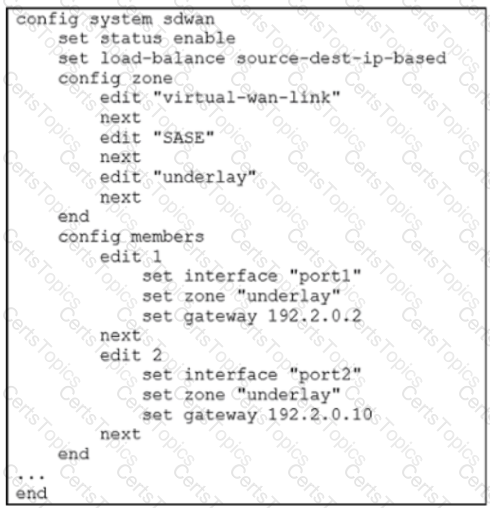
Which algorithm does SD-WAN use to distribute traffic that does not match any of the SD-WAN rules?
Which two statements are correct when traffic matches the implicit SD-WAN rule? (Choose two.)
Exhibit.

The exhibit shows the output of the command diagnose sys sdwan health-check status collected on a FortiGate device. Which two statements are correct about the health check status on this FortiGate device? (Choose two.)
In a hub-and-spoke topology, what are two advantages of enabling ADVPN on the IPsec overlays? (Choose two.)
Refer to the exhibits.
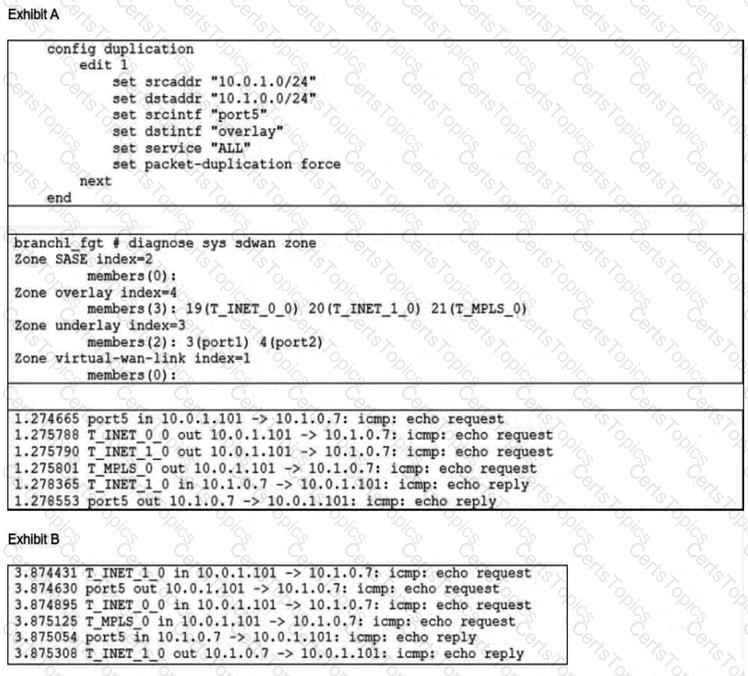
Exhibit A shows the packet duplication rule configuration, the SD-WAN zone status output, and the sniffer output on FortiGate acting as the sender. Exhibit B shows the sniffer output on a FortiGate acting as the receiver.
The administrator configured packet duplication on both FortiGate devices. The sniffer output on the sender FortiGate shows that FortiGate forwards an ICMP echo request packet over three overlays, but it only receives one reply packet through T_INET_1_0.
Based on the output shown in the exhibits, which two reasons can cause the observed behavior? (Choose two.)
Refer to the exhibit.
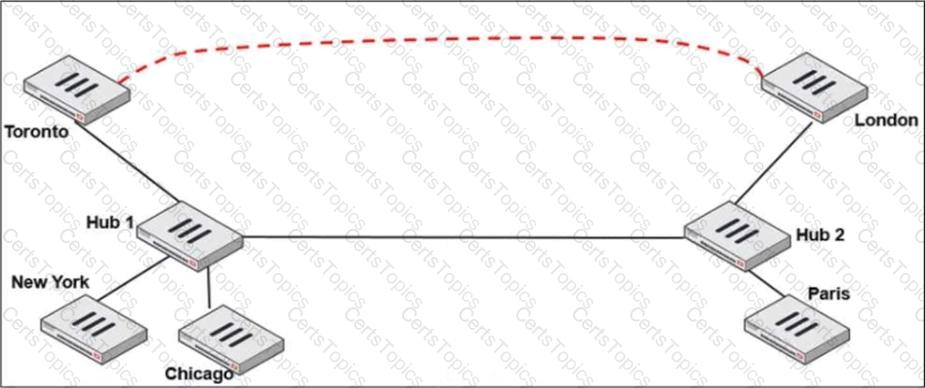
Two hub-and-spoke groups are connected through a site-to-site IPsec VPN between Hub 1 and Hub 2.
Which two configuration settings are required for Toronto and London spokes to establish an ADVPN shortcut? (Choose two.)
Which two statements about SLA targets and SD-WAN rules are true? (Choose two.)
Refer to the Exhibits:

Exhibit A, which shows the SD-WAN performance SLA and exhibit B shows the health of the participating SD-WAN members.
Based on the exhibits, which statement is correct?
Which diagnostic command can you use to show the SD-WAN rules, interface information, and state?
diagnose sys sdwan service
diagnose sys sdwan route-tag-list
diagnose sys sdwan member
Refer to the exhibit.
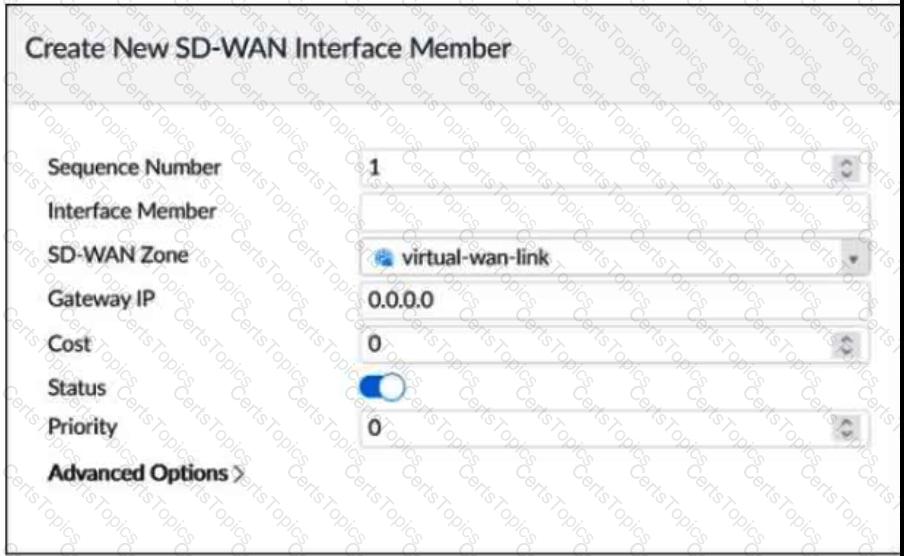
Which two SD-WAN template member settings support the use of FortiManager meta fields? (Choose two.)
Which SD-WAN setting enables FortiGate to delay the recovery of ADVPN shortcuts?
Which type statements about the SD-WAN members are true? (Choose two.)
Which statement is correct about SD-WAN and ADVPN?
Refer to the exhibit.
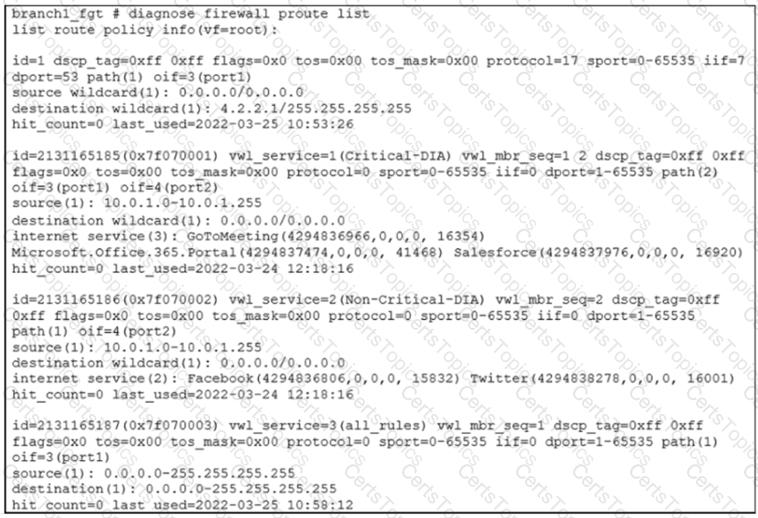
Based on the output, which two conclusions are true? (Choose two.)
What are two benefits of using the Internet service database (ISDB) in an SD-WAN rule? (Choose two.)